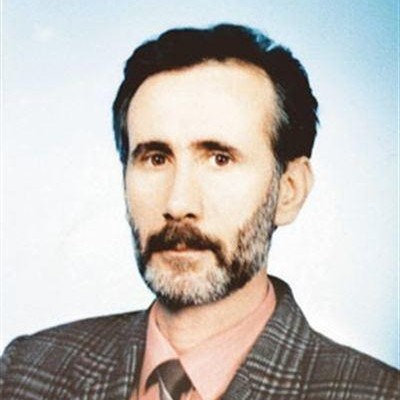
b: 1953
Mahmut Yıldırım
Summary
Name:
Mahmut YıldırımNickname:
Yeşil (Green) / Ahmet DemirYears Active:
1980 - 1998Birth:
May 03, 1953Status:
EscapedClass:
MurdererVictims:
12+Method:
ShootingNationality:
Turkey
b: 1953
Mahmut Yıldırım
Summary: Murderer
Name:
Mahmut YıldırımNickname:
Yeşil (Green) / Ahmet DemirStatus:
EscapedVictims:
12+Method:
ShootingNationality:
TurkeyBirth:
May 03, 1953Years Active:
1980 - 1998bio
Mahmut Yıldırım was born on May 3, 1953, in Turkey, and is believed to be of Zaza Kurdish origin. Very little is publicly known about his early life or education, and much of what is available is shrouded in secrecy and disinformation. He emerged into public view not as a criminal but as a mysterious figure connected to Turkey’s intelligence apparatus — specifically as a counter-guerrilla operative who later became deeply entangled in the shadow operations of the Turkish state.
He introduced himself under various aliases, most notably Ahmet Demir in public and Yeşil (Green) within intelligence and paramilitary circles. The code name “Yeşil” would soon become synonymous with clandestine killings, torture, disappearances, and the murky world of Turkey's deep state.
Yıldırım reportedly worked with the National Intelligence Organization (MİT) during his time in Elazığ, though he was dismissed for being "out of control." Despite this, he allegedly continued covert work with JİTEM, a secretive intelligence unit within the Turkish Gendarmerie, often accused of operating above the law. It was during this phase that he reportedly carried out numerous black ops missions, often against members of the PKK (Kurdistan Workers’ Party), and later, individuals who were seen as political threats to the Turkish state.
Several reports suggest that Yıldırım had access to high-level state-issued IDs — some allegedly marked with "Prime Ministry Intelligence" — granting him wide-ranging impunity to act with force and secrecy. His reach extended across borders as well; MİT is said to have used him in at least four international operations, including the 1998 capture of PKK commander Şemdin Sakık.
murder story
Yıldırım’s name has surfaced in connection to some of the darkest chapters of Turkey’s deep state. He was believed to be a covert hitman, tasked with eliminating perceived enemies of the state. These operations, carried out through the 1990s, were often unacknowledged and undocumented — part of a covert war that blurred the lines between patriotism and terror.
One of his most notorious alleged crimes was the 1992 murder of Kurdish journalist and intellectual Musa Anter, for which he was formally charged in absentia in 2013. Anter's death was part of a larger campaign to silence Kurdish voices and critics of state policy. In 1993, Yıldırım was also implicated in the assassination of Cem Ersever, a former JİTEM officer who reportedly knew too much about internal operations.
In 1995, Yıldırım allegedly kidnapped Iranian agents Lazım Esmaeili and Askar Simitko, which was said to provoke retaliatory kidnappings and disappearances by Iranian intelligence. According to infamous mob boss Sedat Peker, this kidnapping was the trigger for the disappearance of Turkish MİT official Tarık Ümit.
Former MİT official Mehmet Eymür claimed he was introduced to Yıldırım in Ankara around 1995 and used him for "external operations" but denied he was ever formally part of the agency. Eymür also stated that Yeşil became uncontrollable and had been operating independently, even while being shielded by top intelligence figures.
Investigative journalists and government insiders have accused Yıldırım of being behind dozens of political assassinations and disappearances throughout the 1990s. In one bizarre revelation, veteran journalist Mehmet Ali Birand claimed that he was once a target of a JİTEM-approved assassination operation ordered by Yeşil, which was later canceled.
After 1998, Mahmut Yıldırım vanished. Whether he was assassinated, hidden by the state, or simply escaped justice is unknown. In 1999, Interpol issued a red notice for his arrest, but no trace of him has been found since. In 2013, security insider Korkut Eken claimed that Yıldırım was still alive, though no hard evidence has ever confirmed this.
His son, Murat Yıldırım, published a book titled Yeşil: Savaşçı in 2009, defending his father’s legacy and referring to him as a “fighter for the nation.” The myth of Yeşil lives on — feared, debated, but never fully understood.